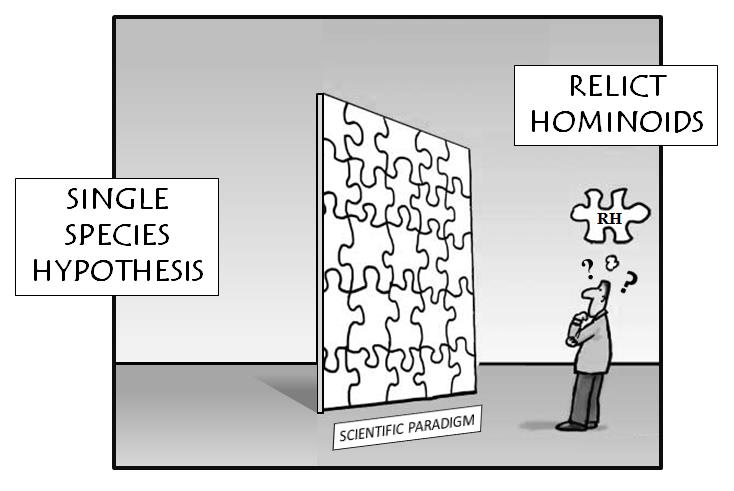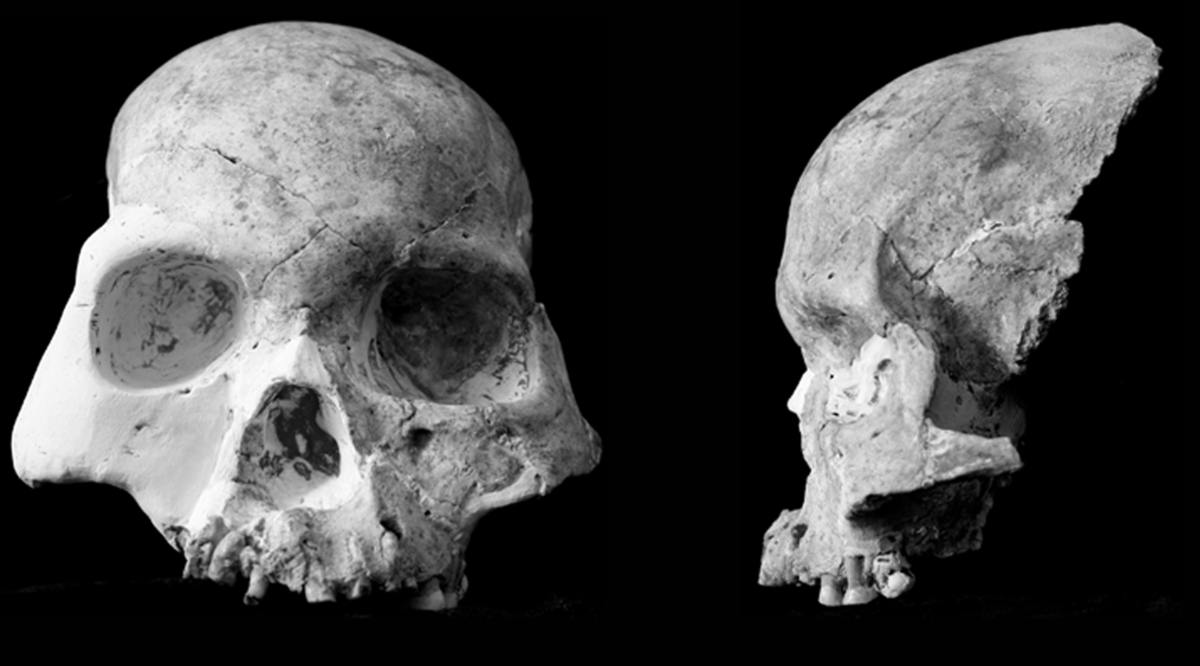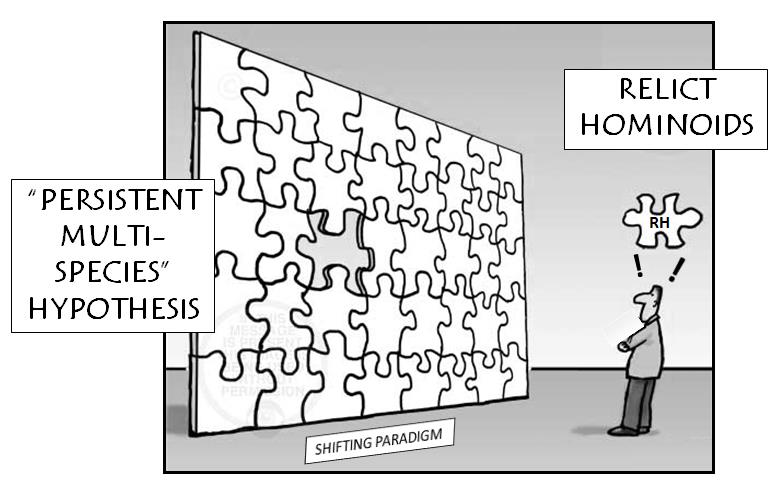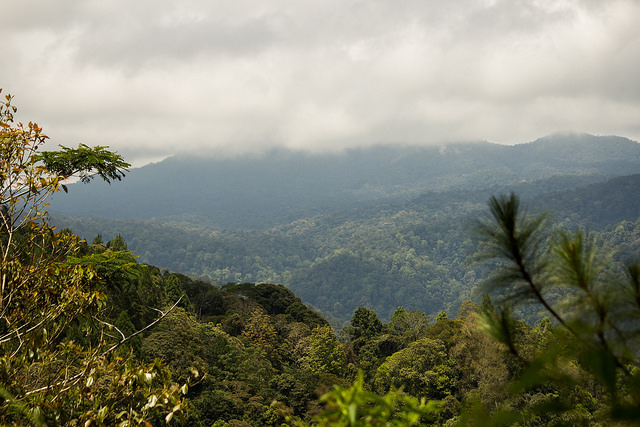When in 1996, I began seriously considering the sasquatch question from an academic standpoint, after witnessing a long line of remarkably fresh and distinct 38 cm footprints in southeast Washington, the phenomenon had already been under popular scrutiny for nearly 40 years, although scientists had almost unanimously and resoundingly rejected the very possibility that such a creature existed. As I knelt beside those astonishing prints, all too aware of that negative indictment and the treatment of those scientists who open-mindedly and seriously considered the evidence, I asked myself, “Do you really want to go down this path?” But faced with what seemed to me compelling evidence of the potential for such a relict species, how could I possibly turn away from it? Even as affirmative data continued to accumulate – ample enough evidence it would seem to motivate any objective investigator to at least consider the possibility – scientific rejection remained resolute, even disdainful.
Only a single species at a time
It would be decades before a sensible explanation for the intransience of the anthropological community on this proposition would occur to me. To understand the irrational and quite un-scientific rejection embodied in declarations such as – “It can’t exist, therefore it doesn’t exist, and it doesn’t matter what evidence you think you have” – one must appreciate the development of a paradigm that had considerable influence on the initial interpretation of hominin evolution, particularly during the 1960s, but which has cast its shadow forward through time for over half a century. Its roots can be traced to Russian microbiologist Georgy Gause, who in 1934 published an influential concept called the Principle of Competitive Exclusion. The principle, which was also employed centrally in the nascent field of ecology, states that no two species can occupy the same niche at the same time. One will be successful and drive the other to extinction, or at least out of that particular niche through selection for character displacement. For example, one species may experience a shift in diet, or in the time or place where it feeds.
As early as 1950, Ernst Mayr had proposed the application of the Competitive Exclusion Principle to hominin evolution. The hominin niche was perceived as a rather singular one, defined in its broadest terms by traits such as bipedalism, braininess, and above all the possession of culture. Over the next several decades as the principle garnered influence, some researchers advocated that the hominin niche was an altogether exclusive club, occupied by one and only one hominin species at any given time. Hence, the Single Species Hypothesis emerged, as it was referred to in paleoanthropology. This served to reinforce a perception of human evolution as a single polytypic lineage, an inexorable single-file march toward Homo sapiens, with one hominin species giving rise to and being replaced by a succeeding one. Among its staunchest advocates were Loring Brace and Milford Wolpoff at the University of Michigan. This interpretation of human evolution was inadvertently reinforced by the graphic portrayal of the procession of hominin evolution as depicted in iconic figures such as the fold-out in Time-Life’s Early Man volume, so familiar to those of my generation. The influence of this figure is evident in its numerous memetic variations employed throughout pop culture.
Thus, an investigator of potential relict hominoids in the ‘50s and ‘60s, such as Ivan T. Sanderson, a naturalist who authored an encyclopedic treatment of evidence of unknown sub-human creatures, be they yeti, sasquatch, almas, or orang pendek, for example, would be confronted by a prevailing paradigm of hominin evolution, dominated by the Single Species Hypothesis. There was no accepted scientific context to accommodate the coexistence, let alone existence, of relict hominoid species alongside Homo sapiens (Fig. 1). Dr. Josef Biegert, Director of the Zurich University Institute for Anthropology made this statement in 1969, in reaction to one such proposal, “The thesis to which Neanderthal creatures might still be living among us is absolute nonsense, whatever supposed proofs might be put forward. Today, on the Earth, there lives only one species of hominids, modern Homo sapiens.”

A dogma crumbles
This linear exclusive-club concept of hominin evolution was challenged in the 1970s by the eventual recognition of at least two kinds of fossil australopithecines, either gracile or robust in their masticatory adaptations, living contemporaneously in southern Africa of 2-3 million years ago. Some rationalized this apparent exception to the Competitive Exclusion Principle by pointing out that australopithecines were, after all, little more than bipedal “chimps” displaying meager brain enlargement and certainly lacking tools, which “maketh the man.” Therefore, it was argued, taxonomic diversity among this grade of contemporary species could be accommodated in these earliest of the hominins. However, once a Homo grade was achieved, in particular the more advanced Homo erectus (a.k.a. H. ergaster), then competitive exclusion was presumed to be in full force, and from then on the hominin niche was understood to be once again an exclusive club.
This fallback position was promptly undercut in 1976 when Richard Leakey and Alan Walker provided unequivocal fossil evidence for the contemporaneous existence of multiple species of Homo, as well as persistent forms of robust australopithecines (or paranthropines) coexisting in East Africa. Traveling across that landscape, 1.9 million years ago, one might encounter individuals of Homo erectus, H. habilis, H. rudolfensis, or a hyper-robust form of australopithecine, Paranthropus boisei – at the very least – and quite likely additional varieties of hominins, yet to be discovered. These species display the expected ecological reaction, short of extinction, in response to a sympatric competitor, i.e. niche partitioning, through adaptive radiation involving inferred diet, micro-habitat divergence, and possibly also temporal differentiation of resource use. In other words, there was indeed more than one way to be a hominin. In response, Stephen J. Gould made a prediction in his popular column in Natural History magazine, stating: “We know about three [H. habilis and H. rudolfensis were here considered a single species] coexisting branches of the human bush. I will be surprised if twice as many more are not discovered before the end of the century.”
The subsequent decades have indeed heralded repeated discoveries of additional hominin species, far exceeding Gould’s prediction. As of 2017, more than 25 species of hominins are recognized. No longer a single-file procession of succeeding hominin species, our extended family tree is depicted as a veritable bush of radiating branches. And even this expanded taxonomy almost certainly remains an underestimate. Conservative assessments now point to easily double or triple that number of hominin species. Few anthropologist today would contest that the known fossil record grossly underestimates past hominin taxonomic and adaptive diversity. Throughout the past, the rule, rather than the exception has been multiple hominin species coexisting across the landscape. And yet the Single Species Hypothesis, like the proverbial “tin can,” was still kicked down the road from one hominin grade to the next.
This bushy hominin tree was a major theme developed in a Nova documentary series, “Becoming Human,” acknowledging the shift from the Single Species Paradigm. However, the final episode, which introduced modern humans, was titled “Last Human Standing: Many human species once shared the globe. Why do we alone remain?” Introductory remarks addressed the singular circumstance of Homo sapiens’ solitary inheritance of the world. It seems the influence of the Single Species Hypothesis persists, now ultimately transposed forward to our own species. Ironically, the producers’ explanation for this situation echoed the now defunct pronouncement of earlier paleoanthropologists on the supremacy of Homo erectus over the primitive australopithecines. They suggested that in this case, Homo sapiens were so successful that all other hominins were eliminated from the scene. Why would the present be the exception to the rule that has quite apparently prevailed throughout hominin history? This explanation for the lone survivorship of Homo sapiens may prove as unfounded as it was demonstrated to have been for Homo erectus a quarter century earlier. What was not discussed, or even considered in the documentary was the logical alternative — the potential of extant, or nearly extant, relict hominoids.
Late survival of archaic hominin species
Running parallel to the recognition of the contemporaneity of multiple hominin species throughout the past is the realization through ongoing discoveries that a number of these lineages, terminal branches of the bushy hominin tree, have persisted until much more recently than previously recognized. The enigmatic Homo naledi has been dated to less than 300 kya, when Homo sapiens were making their first appearance. A specimen of Homo heidelbergensis recovered from the site of Lishu, which I examined at Peking University has a tentative date of 12-20 kya (Lu Zuné, personal communication). Homo floresiensis, the diminutive hominin from Indonesia was initially dated to 13 kya (although that date has been revised to ~50 kya through more precise sedimentology of the cave deposits in which it was discovered ). The Red Deer Cave People from southwest China, according to recent morphological analyses, represented hybrids between Homo sapiens and an archaic hominin species (likely a form of H. heidelbergensis or the Denisova hominin) . Notably, the age of the youngest fossil specimen is only 11,500 years BP, which implies that the archaic species was still around at that time (otherwise the distinctive archaic traits would have become diluted by the predominant Homo sapiens pool within a few generations) . Results from genomic analyses of extant African populations indicate that interbreeding events with an archaic human population likely occurred within the last 30,000 years, and possibly as recently as 9,000 years ago .
These recent discoveries confirm that we shared the landscape with other hominin species until much more recently than indicated by the fossil record alone – only a few tens of thousands years ago – or perhaps even until more recently, especially when taking into account an adequate extinction window.

One indication of the beginnings of a further shift in paradigm came in the form of a cover story in the March 2012 issue of New Scientist magazine. The cover read – Human Evolution: The Ten Biggest Questions. Many of these questions deal with those adaptations that have long been thought to set the hominin niche apart – i.e. bipedalism, intelligence, language, technology, etc. However, question #9 was – Are other hominins alive today? A concession that the question of relict hominin survival would rank among this selection of puzzling matters deemed central to current anthropological research is a significant acknowledgement, which received only limited commentary. Yet it signals a growing awareness of the complexity of hominin phylogeny and has raised serious consideration of the possibility that pre-modern hominins, and perhaps some more distant hominoids, may still persist.
Now, fifty years later a subsequent investigator presents evidence of relict hominoids to the anthropological community and encounters a shifting expanded paradigm of hominin evolution, one which due to additional data has overturned previous assumptions of the Single Species Hypothesis and reveals a context for the concept of relict hominoids. A theoretical framework we might refer to as the “Persistent Multi-species Hypothesis,” accommodates the proposition that lingering populations of relict species could well exist alongside Homo sapiens into the present (see Fig. 2). Indeed, with the past as our pattern, we should be anticipating their eventual discovery and objectively consider evidence pointing to that end.

Anticipating the necessity of such a change of venue, a shift in perceptions regarding the context of this phenomenon, Ivan Sanderson foresaw a time when that would occur: “…it is my firm belief that in due course, the whole business will be lifted clean out of the ‘mystery class’ and simply become a part of physical anthropology.”
Relict hominoids in Southeast Asia?
An event that should have driven this point home, and hastened the shift in paradigm, was the announcement of the discovery of Homo floresiensis and the public acknowledgement by its discoverers that such hominins might have survived into historical times, possibly even close to the present . This was a major development for those investigating the possibility of relict hominoids. It was not wholly lost on others, such as Chris Stringer, paleoanthropologist at the Natural History Museum in London who in a statement said, "One of the first things I thought of, on learning about the Flores skeleton, was a possible parallel with the orang pendek." The name orang pendek refers to diminutive relict hominoids alleged to survive on the island of Sumatra, known by other names throughout Southeast Asia and documented extensively by anthropologist Gregory Forth . Stringer was not only fully aware of the matter of the orang pendek, but also immediately recognized the implications of the recent dates of fossils of a hominin quite similar to descriptions of this potential relict hominoid, reported throughout Southeast Asia.
Moreover, Henry Gee, managing editor of Nature, commented in an editorial: “The discovery that Homo floresiensis survived until so very recently [referring to the initially reported young age of the fossils of about 13,000 years], in geological terms, makes it more likely that stories of other mythical, human-like creatures such as yetis are founded on grains of truth.” He further acknowledged the possibility that the diversity of hominins was always high, has remained high until very recently, and might not be entirely extinguished. This was a notable acknowledgement in what many consider a flagship scientific journal, betraying a changing attitude, a shift in paradigm regarding the possibility of relict hominoids, although one generally not so openly displayed.
On Flores, the indigenous population, the Nage, refer to a diminutive hairy hominoid similar to Sumatra’s orang pendek, which they call ebu gogo. Since hearing accounts of the ebu gogo, geochronologist Bert Roberts also thinks it possible that Homo floresiensis still stalks the mountain forests of Flores, or at least did so until very recently. Like many other Indonesian islands Flores has experienced a dramatic rate of deforestation throughout the past 100 years with most of the remaining intact forests being confined to slopes and tops of mountains, potentially representing serious habitat degradation for this relict hominoid. Gregory Forth, who has studied the Nage folklore for over 20 years, agrees. He noted that “the ebu gogo may be grounded in some empirical, even hominological reality.” He continued in his Anthropology Today feature: “As amazing as it may seem, the speculation that something corresponding to Homo floresiensis could still be alive, or at least lived so recently to have made an imprint on local memory, is one that I believe can reasonably be taken as a point of departure for further anthropological, including ethnographic, investigation.”

I said earlier that this astounding discovery should have driven the point home, but when discussing the impact and reception of Forth’s publications and pronouncements, he acknowledged that there had been very little, if any, reaction. He was met largely with silence at the suggestion that the search for relict hominoids was a worthwhile endeavor. Even published reviews of his scholarly book focused exclusively on the ethnographic aspects, while omitting any commentary on the central premise of a potential “empirical species” of persisting wildman, as proposed by Forth. As Thomas Kuhn suggested in his influential Structure of Scientific Revolutions, it may require the passing of an entire generation of academics before a novel paradigm can fully take root. In light of the rampant deforestation going on in Indonesia, such a scientific revolution is most likely too late for any wildman on Flores and quite pressing for the orang pendek on Sumatra. From an ecological point of view, the perspectives are significantly better for sasquatch, the suspected relict hominoid species in North America. British Columbia and the Pacific North-West of the US still boast vast tracts of intact old-growth forest, unsettled and unexploited.
Regardless, one can no longer simply and dogmatically proclaim that “They can’t exist.” The scientific context for the possible existence of relict hominoids has been scientifically framed.
Further reading on this topic:
Forth G Images of the Wildman in Southeast Asia. An Anthropological Perspective (2008) Routledge, Taylor & Francis Group
Meldrum J Sasquatch: Legend Meets Science (2006) Forge Books/ Tom Doherty Associates, New York
 Zoology
Zoology
Responses